It's finally time to talk about Greece! After not even half an hour in the country, I was heading out for the first thing on my to-do list, the former home of a chap called Dimitris Levidis.
The villas best days are far, far behind it, and now it exists purely for wall scrawlers, urban explorers and allegedly (everybody roll your eyes together now) Satan worshipers. But before this it enjoyed a period of time as
a movie set. As such, in spite of it being a shadow of its former self, I was able to match some rooms to some old movie scenes, before
nose-diving down the rabbit hole of history that this place has to
offer.
A
half-arsed internet search told me that the former King Pavros had this place
built for his gardener in 1935, which would be a fine backstory. Except
Pavros wasn't King until 1947 and Levidis probably wasn't his gardener.
I quickly learned that the history of the
structure was murky, but some facts were regurgitated more than others.
Some fictions are, too. They masquerade as the "official" story through
the sheer power of copy and paste.
For
example, nearly every source on the internet says that this place
was built in 1935. But... an article written as part of a diploma thesis
at an architectural school in 2017 puts the date of construction as
1938. And despite being the least common date of construction out there
on the internet, I am inclined to believe an architecture diploma thesis over some
guys blog that has been copied and pasted by some other guys blogs. But
ultimately that's inconsequential. We can't be too harsh on some guys blog because this is also some guys blog. The house was built in the 1930s. We can leave it at that.
The circular structure is older than the villa, and commonly said to be an old watch tower from the
Ottoman Empire. But it doesn't quite resemble Ottoman masonry.
Architectural experts have in fact placed its construction around 1840, after the Greek independence from the Ottomans,
and believe it to actually be the remains of a windmill.
The older structure connects to the front of the villa by this big archway, and this is by far the most recognisable feature from the old movies that were once filmed here.
I'm pretty sure this is from a movie from 1968, "Η Αρχόντισσα και ο Αλήτης," which roughly translates to "The Lady and the Tramp," although depending on who is translating it, the word "Lady" is interchangeable with Noblewoman, Princess, or Aristocrat.
(Image not mine, obviously)
Another movie from 1984 showing the same archway.
Slipping under the archway, we have the front door. Scribbled above it is the word "Achilles," which I really should have seen as a precautionary warning to be careful about what I'm looking at. But I'll come back to that.
The front door leads down these steps, made out of marble from Mount Pentelicus, the same marble that built much of the Greek Acropolis and many sculptures in ancient Rome. The steps briefly appear in this 1983 movie:
(Image not mine, obviously)
Here's the cast coming in through the front door, and down the marble steps.
And this brings us into this room, which seems to be the main room used by the film studio. I've seen it in varying forms of refinery, the furniture changing with every movie. But the windows and fireplace are pretty good indicators of where the scenes are.
I am regretful that these aren't the best images. They are screenshots from footage on the internet of movies that all predate the existence of remastering. The quality isn't going to be stellar.
And I can't understand Greek either. I'm vaguely familiar with their alphabet, and I know the basic words like "Yes" and "No," and "Leave me alone." All the stuff an introvert needs to get by in life, really. But I can't understand Greek, so even though I can watch clips of these movies, I have no idea whats going on.
The same room, from a different angle.
And here we have a dance scene taking place in the same room. The title of this movie is "An Italian Girl from Kypseli."
The graffiti above the doorway reads "The End is Near People," presumably addressing us, the reader, as People. And I know that I really shouldn't diss bad English grammar in a country where English isn't the first language, but I absolutely love that the absence of a comma makes the graffiti suggest that the end comes with proximity to humans. Thankfully, my proximity is not forthcoming.
This area, leading on the back garden, also features in some of the movies, easily recognisable by the arches.
In total, the villa has seventy rooms, and they all look pretty much the same, with barely any roof, and not a surface spared pen or paint. Most of it is naff, but there is some good graffiti hidden in all the nooks and crannies.
But let's get to the real meat of the villa. There's more to this place than movies and graffiti, and extravagant air conditioning caused by the total lack of a ceiling.
The occupant, Dimitris Levidis, was a retired Lieutenant Colonel and a good friend of the Greek Royal Family, Lord Chamberlain of King George II, as well as being a doctor at the University of Athens law department, a professional tennis player, the speaker in the Greek House of Parliament, and a Greek Liaison with the British Royal Family. The man has one sexy CV. I have no idea how the rumour mill missed all that and decided that he was Pavros's gardener.
His wife, Toula Botsi, was the sister of Argyris Botsi and Nikolaos Botsi (the
publishers of two Greek newspapers) as well as Maria Botsi-Tsapalira the first female mayor in
Greece. Some say that Toula also won the Star Hellas beauty pageant too, but the Star Hellas wikipedia page lists all the historical winners and she isn't on there. Throw that in the bucket of myths along with the gardener and the Satan worshippers.
Dimitris father, Nikolaos Levidis, also had a military background, fighting in the Ottoman-Greek war of 1897, which was the Greeks attempt to liberate Crete from Ottoman rule.
The entire Levidis dynasty is actually pretty impressive. The family seems to be of Byzantine origin, coming originally from Istanbul, which was Constantinople back in the day. As such, they were intermingled with the Greek revolts against the Ottoman Empire. Numerous members of the Levidis family actually joined a secret society called Filiki Eteria (The Friendly Brotherhood), which played an active role in the revolution against the Ottoman Empire and subsequently the Greek War of Independence from 1821 to 1829, and the establishment of Greece as an independent country. Numerous members of the Levidis family, among other Greeks, were publicly decapitated under the command of the Turkish Sultan for the roles they played in upsetting the status quo.
And
that kinda makes it poetic that Dimitris Levidis had a great big
seventy-room villa in Greece, the country that his ancestors had fought and died to create. He too would fight the Ottomans
during his own time in the military, during the Greek-Turkish war from
1919 to 1922, the sequel to the first world war that I never knew
existed.
Here
in the UK, we learn about the world wars from a British perspective,
and that only really seems to involve the Germans, French, Americans and
Russians. But the first world war did bring about the end of the
Ottoman Empire too, and that led to Greeks occupying what we now know
as Turkey, and consequently the Turkish backlash, political unrest in Greece, the establishment of modern borders between the two, and a brief period of tension between occupying British forces and the Turks, which fizzled out when nobody wanted to back the UK. And we don't learn any of this in school. We beat the Germans and that was that. Fuck the after-party.
In 1940 the Italians invaded, believing Greece to be an easy win, what with the political unrest following the war with Turkey. But much to their surprise they only succeeded in unifying the Greeks, causing them to shelve their political divisions and repel the invaders. But then in 1941 the Germans invaded, and the Greeks were completely overrun.
King George II had only been reinstated in 1935 following all of the political chaos of the war with Turkey, and he ended up going into exile, leaving his country under Nazi occupation. Dimitri Levidis went with him, leaving a handful of servants in the villa. Among them was a chap called Chrysanthose
Kaouris, who seemed to be calling the shots in his masters absence.
King George II and Dimitris Levidis ended up first in Crete, which also caught the attention of the Germans. Crete did put up a good fight, defended by Greek and New Zealand forces, before the German forces finally took it.
Again, a complete surprise to me. No British kid in school ever learns about what New Zealand was getting up to during the Second World War. We only ever think about it being us vs the Nazis, but the war truly was global, and each of its smaller conflicts all played a crucial role.
But with Crete lost, King George II and Dimitris Levidis traveled first to Cairo and then to the UK, where they would stay for the duration of the war.
Let's head upstairs!
The graffiti up here is much more extravagant.
Someone has taken a good chunk out of their day to paint the walls and ceiling black and then cover it in white dots. If only they'd done the entire room! It would look amazing!
I'm quite fond of the jellyfish wearing human bodies.
And then here we have human eyes looking out from within a skull. This is the work of the artist Achilles. In fact, quite a lot of the work around here is his doing.
Achilles sometimes incorporates household features into his artwork. In this case, a fireplace has become a skull mouth.
And here Achilles has turned a fireplace into a vagina. Nice job, Achilles! I love it, but I can't post it on anything owned by Zuckerberg. Even if the algorithm doesn't get me, the easily offended Boomers will.
This appears to be a small chapel in the upper floors of the villa.
And here we have another piece by Achilles. But remember what I said about being careful about what I'm looking at? I totally missed the full scale of what Achilles was doing here. See, he's not just a graffiti artist who makes vaginas out of fireplaces. He's a master of perception too, and he caught me completely by surprise, because while I was happy to photograph this room with a cartoon face painted around the door frames and inside the doorways, I totally missed the bigger picture. If only I had taken a couple of steps back! Luckily someone else on Instagram has very kindly let me use their image to show what this graffiti piece looks like in its entirety.
(Photo credit: Stefan Henseke)
Isn't this cool? Achilles incorporates multiple rooms into his pieces, and I totally missed it because from the wrong angles, this doorway just looks like a picture of a lollypop and some random splodges. And in a world where so much graffiti is just random splodges, the casual adventurer can just walk right past them. But if you catch Achilles from the right angle, you see a picture. But even then there are additional layers, because in my image, taken through the doorway, we saw that without the boys scalp on the top of the doorway, he has an exposed brain.
And I fucking love it, even if I did suck at seeing it.
So we're going to walk through the boys face to get to the roof.
Now there's a sentence I never thought I'd write...
Well, I say roof, but it's really just a small room on the top floor with no ceiling and more cool graffiti. But because the roof has collapsed, it is possible to get around by walking on the walls of the ruined villa, something I seriously do not recommend. This place is falling apart and I'm dyspraxic. It was pretty silly of me, but hey-ho. Maybe there's a piece by Achilles that I can only see if I'm sprawled on the floor in a pile of rubble.
Now we have downward views of all the upper floor graffiti. But I have to wonder, where are the chimneys? Is that a decorative fireplace?
From here we can also get a great view looking out over Greece, and the city that would be my home for the next week or so. The sun is starting to set, but we aren't done yet!
What is unusual is that the villa seems to have a series of large horizontal platforms attached to the back of it, like balconies but huge, and connected by their own internal concrete stairway.
It's a bit weird.
And whatever the purpose, it was clearly meant to be outdoors and exposed to the elements, because there are the remains of a bay window leading back into the villa.
The stairs lead back indoors too. There's some nice, relatable graffiti here.
And as I came down the stairs I noticed that I'd stumbled across another piece of work by Achilles. This time I was able to find the correct angle of perspective.
Check it out! Isn't it amazing?
Here it's still possible to see the hexagonal floor tiles, although many have been pulled up and stolen.
So
back to the history... it's about to get grim, and you're welcome to
skip this bit and scroll down to the next time I complain about
missing one of Achilles graffiti works in the villa kitchen.
In
1944 Greece was under Nazi occupation and had been for some time. But
there was a resistance, and in the summer of that year, they
ambushed a car carrying some high ranking German officers, killing them. To say that there was a brutal retaliation is an
understatement. The Nazis were fuherious, and by now they were pretty well
accustomed to abusing their power. The problem is they had no idea who
these resistance people were.
On the 16th and 17th July the Nazis took some two hundred Greek prisoners up to this villa and basically moved in, forcing the housekeeper Chrysanthose
Kaouris to serve them as if they were honoured guests. Fifty of their prisoners were already prisoners brought there from a prison camp, but the other 150 were just randoms off the street. Over the next two days, the Nazis interrogated and tortured them for any information they might have on the perpetrators of the car incident. The sound of screams and gunfire could be heard by all of the townsfolk. Chrysanthose
Kaouris tried to keep himself to himself but he wrote about the things he witnessed in his journals at the time, describing how he'd be working in the kitchen when a Nazi would just stroll in and wash his bloody knife in the sink, bragging about how many people he'd mutilated with it. On another occasion, Chrysanthose
came outside to serve the Nazis some drinks, and saw a Greek man stripped naked and suspended about two
feet from the ground by ropes tying his hands and feet to trees. The
Nazis kicked the naked man in the genitals, demanding a confession.
And I really feel sorry for Chrysanthose during this period. I mean obviously I feel sorry for the victims of torture too, but for Chrysanthose this was its own kind of psychological torture. He'd been minding his own business, running a house while the owner was away, and now he had to serve these home invaders, as people were tortured and killed around him. He knew that if he objected in any way or refused to be the Nazis butler, he'd be joining these ordinary Greek citizens in their torture, and when this was over he'd be carrying what he witnessed for the rest of his life.
Alongside
the beatings and mutilations, there was forced sodomy via pointy sticks,
and the most notorious act of torture when one Greek had their leg tied
to a tree and the other to a motorcycle, which then drove away and tore
the prisoner in two. Chrysanthose
also described how he saw three Greek prisoners being forced to dig a
pit. This pit would ultimately be their grave. Chrysanthose says that anyone who had
survived the torture was executed and thrown into the pit. Dismembered
limbs were put on display around the villa grounds, and the Nazis left the villa and just
got on with their lives. Some of them did want to burn down loads of
Greek homes too, but then a Captain Schmitt, the German
commander of a large radio installation, convinced them that this would
be overkill.
Hmm... personally I think we passed overkill some time ago, but hey-ho. Captain Schmitt
is regarded as a voice of sanity among the Nazis occupying Greece, and I think
that's something worth remembering. The first country that the Nazis
invaded was their own. While they did enable every psychopath with a
fantasy for committing atrocities to make their dreams come true, there
were still a lot of German people who just wanted to get from one day to
the next.
Following the German occupation, Chrysanthose
put a wooden cross over the burial site of the 200 people tortured and
murdered at his house, and for a while it became a place that the Greek
citizens would come to and pay their respects.
In the back rooms of the villa, I found what I assume to be the kitchen and bathrooms. It's difficult to tell for sure when everything has been stripped out, but the surviving features do give this area a kitchen vibe.
Some wallpaper has miraculously survived.
Stepping back into the hallway from the kitchen, I noticed this eye painted on the wall, and I really wish I had gone back into the kitchen to look at it from there, because this is yet another piece by Achilles that went completely over my head.
Luckily someone photographed it back in 2018, and has very kindly let me use their shot here.
(Photo credit: Konstantina Pontiki)
Honestly, I'm blown away by Achilles talent but also angry at myself for missing it repeatedly. How many more pieces of art am I missing purely because I'm standing in the wrong place?
Over here there's some poetry scribbled on the wall.
I'm assuming that this was a bathroom.
There's this stairway labeled "Death Way" rather ominously. It leads into the cellar. Perhaps it's a bit silly of me to venture into the cellar of this place, seeing as it's falling apart. Whoops.
Here we have our first penis graffiti. I guess people all over the world like drawing cocks.
Looking at youtube videos, it seems that the cellar is the place where most "Paranomal Investigations" take place. I personally didn't encounter anything. I never do. I'm open to the paranormal but I do think that if it happened with enough regularity to support as many youtube channels as it does, it would be scientifically observable and we'd have solid conclusive proof of it by now. Ectoplasm would be on the periodic table.
Having said that, given the history of this place, it's no wonder that people believe it to be haunted. I've had people ask me for the locations of places so that they can sit around in the dark and scream at the wind do paranormal investigations, and it will be something silly like a derelict hair salon. I mean why would that be haunted? If anywhere is going to be haunted, it's Villa Levidis.
Numerous stairs lead up to the surface. I think this may come up by the Lollypop Boys face.
On the wall it says "Satan is Alive." Oh No!
Over there by the door is another interesting piece of graffiti. It's a figure made out of paint splatters and then given a head and hands.
I'm a little miffed that I didn't photograph is close up, so I'll just zoom in on this picture:
I'm quite fond of it.
Because of the sloped landscape, the cellar actually comes out in the garden, and it was in the doorway that I found another one of those splattery figures with a realistic head.
Well, realistic-ish. His brain is on the wrong way.
A short distance away, stairs spiral back up to the ground floor, and they are decorated with similar graffiti.
I really like this. It's almost like decorating the house with the portraits of imagined former occupants
So this is Lina Cavalieri in a space suit. She was an Italian actress born in 1874. Her likeness was originally put into a space suit and then printed onto a decorative wall plate by the Italian home decor company, Fornasetti. It seems that the graffiti artist has taken that image and reproduced it here.
(Photo credit: Fornasetti)
I wasn't able to find much else on the other portraits, but it seems the person who painted them here was taking portrait inspiration from a variety of different places, and I am all for it. The faces are weirdly haunting, and give the illusion of portraits hanging on the wall. It kinda sweeps up the imagination a bit.
Aaaand then we step outside and find She-Ra fingering herself.
Dimitris Levidis returned in 1946. He found that his former home was now a mass grave site visited frequently by the loved ones of those who had died there at the hands of the Nazis. And I'm sure he felt some sympathy. Who wouldn't? But the bottom line was he wanted his house back. He allegedly had all of the corpses exhumed and moved, presumably to a more respectful burial site.
And then he got on with his life, growing old with his wife here at Villa Levidis, holding all manner of fancy party attended by his wealthy friends. He finally died in 1963, and his wife Toula had difficulties maintaining the house without him. She ended up renting out the house to a film studio, resulting in Villa Levidis being the backdrop of many a Greek movie throughout the 60s, 70s and 80s.
George didn't want it. Perhaps this had something to do with its gruesome history. Perhaps he just didn't like the look of it. Whatever the reason, he sold it to a businessman in 1991. But then mysteriously the building caught fire the day after the sale, and the villa fell into ruin.
But with the building in ruin, the new owner found himself in a bit of a pickle. The whole hill was considered a protected forest, meaning nothing new could be built here. The only alteration he could legally make was the restoration of what already existed. A costly project, getting more and more costly by the day.
And so the mansion was abandoned, although it's been said that a lot of the physical vandalism has been carried out by treasure hunters, following rumours that the Levidis left a lot of dosh hidden in the walls.
From what I've read, it was in front of this garage area where the Nazi executions took place. Now this area is all just more of the same.
But there is another Achilles piece here, and this time I managed to get the correct angle. Nearby Achilles has painted a gigantic eyeball over the window of a small bungalow, and put Death on the wall, facing out through it.
And I love it. If you want to see more of Achilles artwork, and all the cool things he does with doorways and perspective, check out his Instagram here.
Let's slip inside the bungalow...
That bungalow went on longer than I thought it would. Now, there's one final stop and that's the backyard.
And here we have the swimming pool. It's iconic in that it appeared in various movies filmed here, but there's also a gruesome rumour that a little girl once fell in and died. But I can't find any verification on that. Maybe it's as much a myth as the Satan Worshippers are.
The house has seen enough suffering, and the use of this place for movies is nice, but putting all that aside, this place was a home once. It was built to be the place where a couple lived happily together, and as such it's kinda nice that I have found images of this pool that show Dimitris and Toula together in 1961, with all that awful history now in the past.
It's kinda wholesome, and even though these photos are blatantly posed, it's nice to see that this place had some happy memories too.
The
future for Villa Levidis seems pretty non-existent. In 2007 it fell
into the hands of another businessman from Cyprus and he's done
absolutely nothing with it. But then the ex-King Constantine, the last King
before Greece dismantled their monarchy, has apparently expressed an
interest in buying the mansion, having spent a lot of time here in his
youth, being the son of Pavlos and the nephew of George II.
How awesome is that? Could you honestly see the British Royal Family behaving charitably if we abolished the monarchy over here?
Actually, that's probably for the best in regards to Andrew. There's one guy we don't want to see building a children's home.
So far, Constantine hasn't done anything with Villa Levidis, and he died last year so I doubt he ever will now, but there are rumours that the former royals have re-obtained the villa. I guess we should just wait and see.
Oh and here's the dog kennel.
So that's all I've got for Villa Levidis, but it is the start of my blogs about my adventures in Greece. I won't be writing them all at once though. I had a great time in Greece, but I don't want to re-live it all in one go. Let's really drag that trip out.
My next two blogs will be on the Shropshire blog. Telford, to be specific. Time to prod that wrinkly old hornets nest.
In the meantime, I'm on social media, and I hate it, but it is the best way to make sure you don't miss a blog post. Instagram is by far my most used platform even though the algorithm hates me. Facebook is my second most used, which really shows how much I hate the others, right? Vero is everything Instagram should be but slightly buggier and with a smaller userbase. Reddit's alright. Threads and Twitter seem to be competing for the largest number of caveman-brained bigots. And I'm on them all, because I have a self harm problem. Find me. We'll be buddies.
Thanks for reading.
















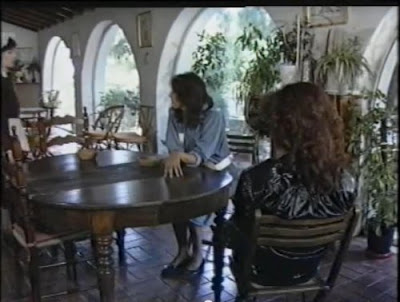






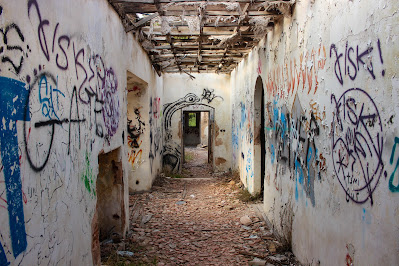




























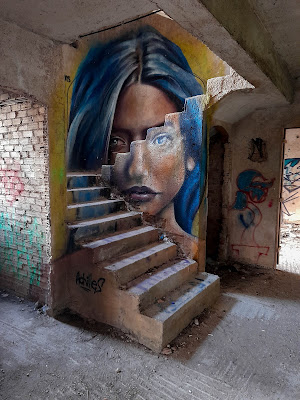












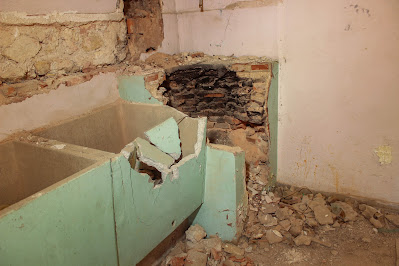



























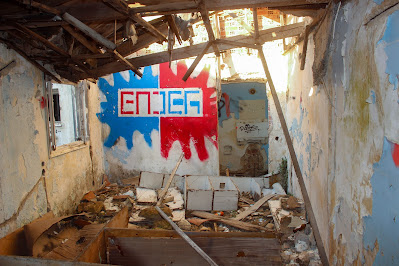

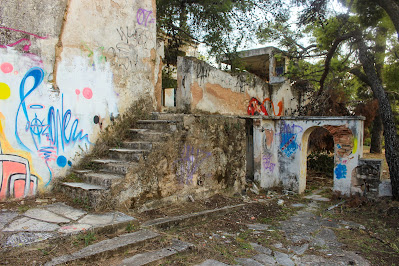











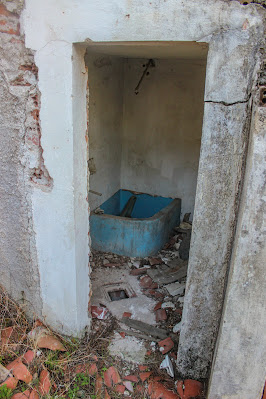










No comments:
Post a Comment